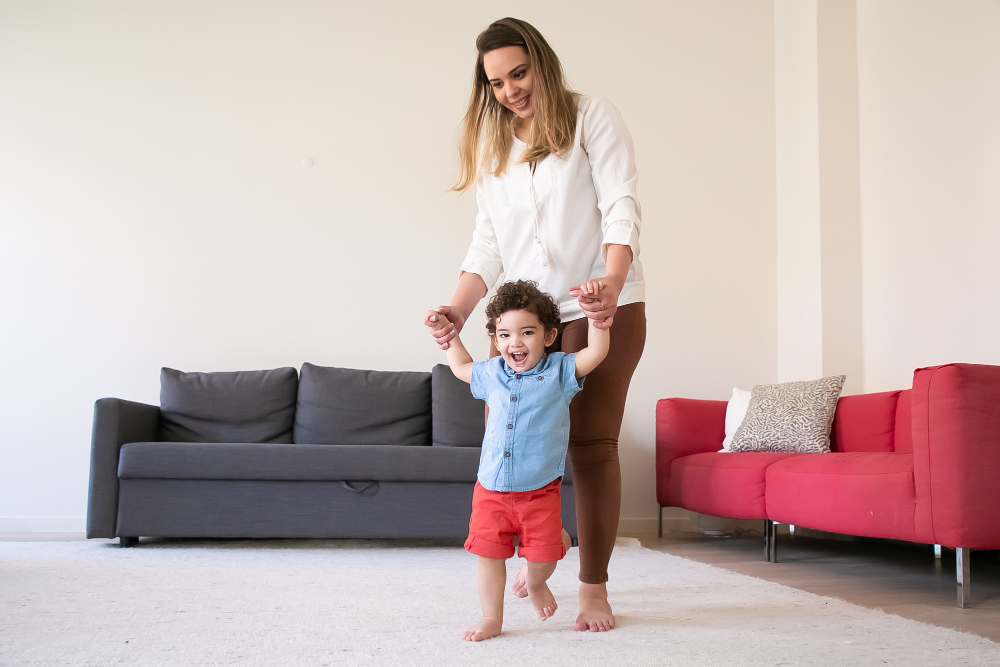Gait Abnormalities
By: Dr. Abe Kopolovich, DPT, MBA

SYMPTOMS
There are several different kinds of gait abnormality:
- Waddling gait. Your child’s walk may look duck-like.
- Ataxic [uh-tak-sic] gait. Your child’s feet are planted wide apart and move in motions that aren’t regular. Their feet may weave or slap when they walk.
- Magnetic gait. Your child’s feet may seem to stick to the ground, or shuffle.
- Spastic gait. Your child may have a stiff foot or leg that causes them to limp.
- Scissors gait. Your child’s knees or thighs may cross in a scissor-like motion. In some cases, the knees or thighs may hit each other.
- Propulsive gait. Your child may be stooped or have a bent-over posture when they walk.
WHEN TO SEE A DOCTOR
You should see your child’s doctor if they cannot control their legs, or if you can’t figure out why they are walking abnormally.
CAUSES
There are many causes of gait abnormalities, including other medical conditions. Some possible causes include:
- Arthritis
- Problems with the foot, like sores, swelling, and calluses
- A broken bone
- Sore muscles
- Infection
- Injuries, like a sprained ankle
- Legs that are not the same length
- The wrong size of shoes
- Shin splints
The type of gait abnormality your child has may help your doctor figure out what is causing it. Certain gaits are caused by certain conditions.
- A propulsive gait can be a sign of:
- Carbon monoxide [mon-OK-sahyd] poisoning
- Manganese [MANG-guh-nees] poisoning
- Parkinson’s disease
- A spastic or scissors gait can be a sign of:
- Multiple sclerosis [skli-ROH-sis] (MS)
- Brain trauma
- Cerebral palsy
- A waddling gait can be a sign of:
- Muscle disease
- Muscular dystrophy [DIS-truh-fee]
- Hip dysplasia [dis-PLEY-zhuh]
- A magnetic gait can be a sign of:
- Frontal brain conditions
- Hydrocephalus [hahy-druh-SEF-uh-luhs], or brain swelling
- An ataxic gait can be a sign of:
- Brain injury
- Stroke
- Damaged nerve cells
There are many other possible causes of an abnormal gait not included here.

DIAGNOSIS AND TESTS
To figure out what is causing your child’s gait abnormality, your doctor may do some tests and ask questions about your child’s medical history.
TREATMENTS
Treatments for gait abnormality vary based on the cause of the walking problem and the kind of walking problem your child has.
Physical therapy is the most helpful treatment for children with gait abnormalities. It nearly always helps reduce the risk of injury from falls or a loss of balance.
Some treatment options for specific abnormalities appear below.
Propulsive gait:
- Provide support for your child so they can keep their independence.
- Visit with a physical therapist to talk about learning how to walk in another way, or to improve strength and endurance.
- Get your child a walker or cane to help them move around better.
Scissors gait:
- Consider getting leg braces or splints to help your child keep their legs in the right position for walking.
- Meet with a physical therapist to do walking exercises.
- Visit your child’s doctor to discuss possible medicines to reduce unwanted leg motion.
- Since the legs can rub together and tear the skin with this kind of gait, skin treatment might be needed.
Spastic gait:
- Do exercises to strengthen muscles.
- Your child’s doctor may prescribe medicines that relax your child’s muscles and allow them to walk more normally and have more control over their legs.
- Get your child leg braces or splints to help keep their legs in the right position for walking.
Magnetic gait:
- This abnormality is caused by brain swelling, so when the swelling goes down, the gait abnormality may go away.
Your child’s doctor can give you more advice on how to help your child learn to walk normally.
PREVENTION
Gait abnormalities can sometimes be prevented by stopping or treating the physical condition that’s causing the walking problem.
WHAT ARE GAIT ABNORMALITIES?
- Feet
- Brain
- Legs
- Spinal cord
- Inner ear (which helps with balance)
Gait abnormalities can be caused by lots of underlying conditions. Some are more serious than others. If your child’s ability to move freely is hampered by their abnormal gait, you should talk to your child’s doctor about figuring out the cause.
Some kinds of gait abnormality can be improved either with time, as the legs heal, or with treatment to train the legs to walk the right way. However, with some conditions the gait abnormality may not go away; it can only be treated.


